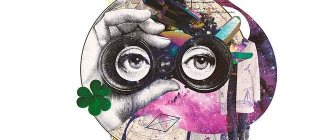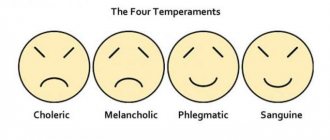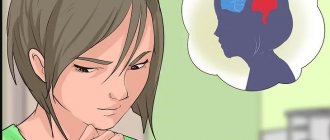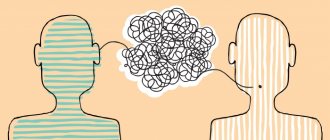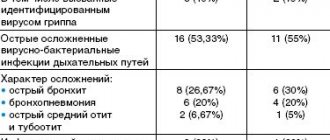Perception and its properties
Perception in its essence refers to a complex mental process, which consists in a holistic reflection of phenomena and objects acting at a certain time on the senses. Conventionally, perception is represented as a combination of thinking, memory and sensations. Experts identify the following properties of perception:
- objectivity;
- integrity;
- constancy;
- generality;
- selectivity;
- structure;
- meaningfulness.
We propose to consider each of the above properties in more detail.
Physiological mechanism of perception
The physiological basis of perception is the processes taking place in the sense organs, nerve fibers and the central nervous system. Under the influence of stimuli at the endings of the nerves present in the sensory organs, nervous excitation arises, which is transmitted along pathways to the nerve centers, and, ultimately, to the cerebral cortex. Here it enters the sensory zones of the cortex, which represent, as it were, the central projection of the nerve endings present in the sense organs. Depending on which organ the sensory zone is connected to, certain sensory information is generated.
Since perception is closely related to sensation, it can be assumed that it, like sensation, is a reflexive process. Ivan Petrovich Pavlov showed that perception is based on conditioned reflexes, i.e. temporary nerve connections formed in the cerebral cortex when receptors are exposed to objects or phenomena.
Temporary nerve connections that ensure the process of perception can be of two types: 1. Formed within the same analyzer; 2. Interanalyzer.
The first type occurs when the body is exposed to a complex stimulus of one modality (for example, a melody). The second type of neural connections formed under the influence of a complex stimulus are connections within different analyzers, the emergence of which Sechenov explained by the existence of associations. These associations in humans are necessarily accompanied by an auditory image of the word, thanks to which the perception acquires a holistic character.
Objectivity
With the help of objectivity and constancy of perception, a person is not able to perceive the surrounding reality in the form of a set of different sensations. Instead, he sees and distinguishes objects separate from each other that have certain properties that cause these sensations. After a long study and conducting various experiments, scientists came to the conclusion that the lack of objectivity of perception can cause disorientation in space, impaired perception of color, shape and movement, as well as hallucinations and other mental abnormalities.
One of these similar experiments was as follows: the subject was placed in a bath with a saline solution at a comfortable temperature for him, where his perception was limited. He only saw a faded white light and heard monotonous distant sounds, and the coverings on his hands prevented him from receiving tactile sensations. After several hours of being in this state, the person became increasingly anxious, after which he asked to stop the experiment. During the experiment, subjects noted deviations in the perception of time and hallucinations.
Integrity
It is worth noting that integrity and constancy of perception are interconnected. This property of perception allows you to create a holistic image of an object using generalized information received about the individual qualities and characteristics of the object. Thanks to integrity, we are able to perceive reality as organized in a certain way, and not as a chaotic accumulation of touches, individual sounds and spots of color. For example, when listening to music, our perception is subject to hearing not individual sounds (frequency fluctuations), but the melody as a whole. It’s the same with everything that happens - we see, hear and feel the whole picture, and not individual parts of what is happening.
Meaningfulness
The essence of this property is to give a perceived phenomenon or object a certain meaning, designate it with a word, and also assign it to a certain language group, based on the subject’s knowledge and past experience. One of the simplest forms of understanding phenomena and objects is recognition.
Swiss psychologist Hermann Rorschach discovered that even random ink spots are perceived by a person as something meaningful (lake, cloud, flowers, etc.), and only people with mental disorders tend to perceive them simply as abstract spots. It follows from this that the perception of meaningfulness occurs as a process of searching for answers to the question: “What is this?”
Perception disorders
1) Illusions are erroneous perceptions of real objects and phenomena. They can be auditory, visual, olfactory, etc.
Under certain conditions, they occur in most people and can be caused by physical (perception of a spoon in a glass of tea that appears broken), physiological (split images of objects if you press on the side of the eyeball at the moment of perception) and psychological reasons (overestimation of vertical lines compared to horizontal ones) .
Illusions of perception
a) Ebbinghaus illusion
This is an optical illusion of perception regarding size. Two objects of the same size can look different. If one object is placed among smaller objects, it will appear larger than if the same object is placed among larger objects.
b) Ponzo illusion
This is an optical illusion of perception. Mario Ponzo suggested that the human brain determines the size of an object by its background. He drew two identical segments against the background of two converging lines, like a railway track stretching into the distance. As a result, horizontal lines are perceived differently.
c) Aristotle's illusion
This is an illusion of touch. A small object (pencil) is placed between (under) crossed fingers (it’s easier to use the middle and index fingers) so that it touches one finger on the inside and the other finger on the outside. When you move your fingers (and hand) over an object (back and forth), after a while you get the impression that your fingers are touching 2 objects.
d) Zellner illusion
An optical illusion in which parallel lines intersected by a series of short diagonal lines appear to diverge.
e) Müller-Lyer illusion
An optical illusion that occurs when observing segments framed by arrows. The segment framed by the “points” seems shorter than the segment framed by the “tail” arrows.
f) Poggendorff illusion
An optical illusion where the red line is a continuation of the black line, rather than the blue one.
Hallucinations
2) Hallucinations are erroneous perceptions in the absence of an object.
Hallucinations occur with alcohol abuse (delirium delirium), drugs, psychostimulants (LSD, cocaine, etc.), medications (for example, antidepressants), mental illness (schizophrenia, epilepsy), organic brain lesions, cataracts (Charles hallucinations). Bonnet).
Selectivity
It implies the preferential selection of certain objects in relation to others, due to the distinctive features of the subject of perception: his motives, needs, experience, etc. Of the numerous phenomena and objects around us, a person selects at a certain moment only some of them, and the rest remain just a background. Constancy of perception, meaningfulness, selectivity and its other properties are of great biological importance. Otherwise, human existence and adaptation would be impossible in the surrounding world if perception did not reflect its constant and stable properties.
Constancy
The integrity of perception has a close connection with constancy, which should be understood as the relative independence of certain properties of objects from their reflections on receptor surfaces. With the help of constancy, we are able to perceive phenomena and objects as relatively constant in position, size, color and shape.
In psychology, constancy of perception is the stability of the acceptance of various properties of phenomena or objects that persist under various physical changes in stimulation: intensity of speed, distance, light, and much more.
Exaggeration of sharp corners
Many illusions are explained by the ability of our vision to exaggerate the sharp angles we see on flat figures. Perhaps this kind of illusion arises due to the phenomenon of irradiation, since the light space we see expands near the dark lines delimiting the acute angle. The direction of eye movement and their mobility in general are of great importance for these illusions. If there is a break in the lines, then our gaze first falls on the acute angle.
Sharp corners always seem larger than they actually are, which is why certain distortions appear in the relationship between the parts of the visible figure. In Fig. 15 parallel straight lines, due to the influence of the background, appear non-parallel and curved.
Rice. 15. Illusions of non-parallelism of parallel lines
Illusion of distortion of right angle and circle
Sometimes a change in the direction of lines and distortion of the shape of a figure occurs due to the fact that the eye follows the directions of other lines in the field of vision. In Fig. 16a, the sides of the square look slightly convex against the background of concentric circles, but in Fig. 16b, the circle appears somewhat distorted against the background of diverging rays.
Rice. 16. Illusions of distortion of right angles and circles
The significance of constancy
Oa helps an individual to distinguish the size of certain objects, its objective shape, color and angle of view of perceived objects. As an example of the constancy of perception, the following can be cited: just imagine, if our perception did not have such a property, then with every movement any object would lose its properties.
In this case, instead of certain things, we would see only a constant flicker of continuously decreasing and increasing, shifting, stretching and flattening highlights and spots of unimaginable variegation. In this situation, a person would not be able to perceive the world of stable objects and phenomena, which, accordingly, could not serve as a means of understanding objective reality.
Thus, the constancy of perception is the property of a perceptual image to remain relatively unchanged when the conditions of perception change, the absence of which would lead to complete chaos. That is why scientists pay special attention to this aspect.
Properties of perception
1. Objectivity of perception
This is the ability to reflect objects and phenomena of the real world not in the form of a set of unrelated sensations, but in the form of individual objects. Objectivity is not an innate property of perception. The emergence and improvement of this property occurs in the process of ontogenesis, starting from the first year of a child’s life. According to Ivan Mikhailovich Sechenov, objectivity is formed on the basis of movements that ensure the child’s contact with the object (hand movements; eye movements that trace the contour of the object, etc.). Without the participation of movement, images of perception would not have the quality of objectivity.
2. Integrity of perception
Perception gives a holistic image of an object. It is formed on the basis of generalization of information received in the form of various sensations about the individual properties and qualities of an object. The components of sensation are so strongly interconnected that a single complex image of an object arises even when only individual properties or individual parts of the object directly affect a person. This image arises conditionally as a result of the connection between various sensations.
The integrity of perception is expressed in the fact that even with incomplete reflection of individual properties of the perceived object, the received information is mentally completed into a holistic image of a specific object.
3. Structurality of perception
The structure of perception is not just a collection of sensations. It reflects the relationship between various properties and parts, i.e. structure of the subject. Perception brings to our consciousness the structure of an object or phenomenon that we encounter in the real world. We can say that the structure of perception is a reflection of the specific relationship of the elements of the whole. For example, notes enter consciousness, and we recognize the melody, we recognize the triangle in the figure, because we know the aspect ratio of a given figure, or a certain letter remains the same letter despite a different writing style.
Structurality is associated with another property of perception - integrity.
4. Constancy of perception
Constancy is the relative constancy of the image of an object when the conditions of its perception change (for example, a car seems large to us at any distance from it). Constancy is observed to the greatest extent in the visual perception of color, size and shape of objects. Thanks to constancy, which manifests itself in the ability of the perceptual system (a perception system that consists of a set of certain analyzers) to compensate for changes in the conditions of perception, we perceive the objects around us as relatively constant.
A person repeatedly perceives a certain object, and this object is perceived under completely different conditions. This allows the system to maintain relative constancy of the properties of objects and phenomena. Without constancy of perception, people would not be able to navigate the world around them.
5. Apperception
Apperception is the dependence of perception on past experience and personality traits of the perceiver. A person’s knowledge and previous experience play a huge role in apperception. In the process of perception, in order to classify what you perceive, you will put forward and test hypotheses about whether an object belongs to a particular category of objects.
Thus, during perception, past experience is activated. Therefore, one object can be perceived differently by different people. The content of perception is determined by the task, motives of activity, interests. An essential place in apperception is occupied by attitudes and emotions, which can easily change the content of perception.
6. Meaningfulness of perception
Meaningfulness of perception is the property of human perception to endow the perceived object with a certain meaning. Perception is not determined simply by a set of stimuli, but is a constant search for the best interpretation of the data received.
We perceive objects that have a certain meaning. Regardless of the constantly changing content, we learn the same subject. Human perception, being a kind of awareness of objects and phenomena, includes the act of understanding and comprehension.
7. Activity (selectivity) of perception
Selectivity of perception lies in the fact that at any given time we perceive only one object or a specific group of objects, while other objects in the surrounding world are the background of our perception (not reflected in consciousness).
For example, while in a lecture hall, you listen to a lecture without noticing that someone behind you is discussing plans for the evening. Your perception is directed towards the lecture until you are asked about your plans. In this case, you will already be communicating and not listening to a lecture, i.e. perception will be directed towards the interlocutors.
Stability of the visible world
One of the most important and fundamental types of constancy is the stability of the surrounding world. Experts also call this type of visual direction constancy. Its essence is as follows: when the gaze of the observer or himself moves, the person himself seems to be moving, and the objects around him are perceived as motionless. It is worth noting that the weight of an object is also constant and perceived by us. Regardless of whether we lift the load with our whole body, with our legs, with one or two hands, the estimate of the weight of the object will be approximately the same.
Constancy of form
Distortions in the perception of the shape of objects can be encountered when the orientation of objects or the subject itself changes. This type is one of the important properties of the visual system, since correct recognition of the shape of objects is a necessary condition for adequate human interaction with the outside world. One of the first to identify the role of observer knowledge and signs of distance in the constancy of form was Robert Thouless.
In 1931, a psychologist conducted an experiment, the essence of which was as follows: he asked subjects to evaluate and draw or select from a certain set of squares or circles that would be similar in shape to the proposed objects lying on a horizontal surface at different distances from the observer. As a result of the experiment, the subjects chose a stimulus form that did not coincide with either the projection form or its real form, but lay between them.
Perception of speed
It is believed that the closer the trajectory of movement, the higher the speed of displacement of the retinal picture of objects will become.
Therefore, two distant objects appear slower than in the real dimension. The perceived speed of nearby things depends on the phenomenal distance traveled per unit time and, as a rule, does not change significantly.
Constancy of color and light perception
Color constancy refers to the ability of vision to correct the perception of the color of objects, for example, in natural light at any time of the day or when the spectrum of their illumination changes, for example, when leaving a dark room. Experts have come to the conclusion that the mechanism of perceptual constancy is acquired.
This is evidenced by a number of studies. In one experiment, scientists conducted a study on people permanently living in a dense forest. Their perception is of interest, since they have not previously encountered objects at long distances. When observers were shown objects that were at a great distance from them, these objects appeared to them not as distant, but as small.
Similar violations of constancy can be seen in plains dwellers when they look down at objects from a height. In addition, from the top floor of a high-rise building, cars or passing people seem tiny to us. It is worth noting that from the age of two, a child begins to develop such types of constancy as sizes, shapes and colors. In addition, they tend to improve up to the age of fourteen.
LiveInternetLiveInternet
Wednesday, February 16, 2011 22:41 + to quote book 19. Constancy and objectivity of perception. The role of attitude and motivation in perceptual processes. Constancy of perception is the property of a perceptual image to preserve certain phenomenal characteristics unchanged under changing conditions of perception. Types of constancy: 1. Constancy of form. 2. Constancy of size 3. Constancy of magnitude 4. Constancy of color 5. Constancy of motion Procedure for identifying constancy: 1. There is a standard stimulus, the parameters of which are unchanged. 2. There are a number of variable stimuli that vary along the measured parameter. 3. The subject is instructed to select a variable stimulus so that it looks the same as the standard one. How to choose a variable stimulus? Constant coefficient - K = VP/RP (ratio of the amount of compensation performed to the amount of compensation required) - measured in angular inclinations (degrees). V – Perceived magnitude of a variable stimulus, at which it is perceived as identical to the standard one. R – Real value of the standard stimulus. P – Projection value (the imaginary value of the variable stimulus that the subject would choose if he were to compare the standard and variable stimuli based only on the parameters of their retinal images). With complete constancy K=1, i.e. V=P, if K=0 is constant, i.e. orientation occurs only to the retina (without signs). An experiment on the innateness of constancy. In animals, size constancy is not innate. An experiment was conducted with rats that were raised in the dark, and then they were given the task of running along the corridor at the end of which a larger circle was burning, and at the moment when the rat left the starting area and began to run, the circles went out. The rat learned to run towards a larger circle, and then this circle was removed so that it looked like a small one - the rats ran back and forth. And when the larger circle was removed so far that it appeared smaller, the rats began to run towards the smaller circle, which seemed larger. Newborn babies (Skinner). Constancy of perception of magnitude. They tried to develop a conditioned reaction in a 6-8 week old baby to the presentation of a cube with a side of 30 cm and located at a distance of 1 m (when the child turned his head, he received encouragement). This object was then changed and no more reinforcement occurred and the frequency of head rotation was recorded. When a cube with a side of 30 cm is presented. at a distance of 3 m the baby often turned his head, but less often than in the first case. When a cube with a side of 90 cm was placed at a distance of 3 m, the baby turned his head much less often. The child sees a cube with a side of 30 cm at a distance of 3 m in the same way as when the same cube was placed at a distance of 1 m during training, although the size is visible. angle decreased. An experiment on the constancy of visible shape. 50 subjects were presented with 2 rectangles from a distance of 1.5 meters: a reference and a measuring rectangle. The reference one had parameters of 1 meter by 1 meter and was always presented tilted at the alpha angle. The meter always had the same orientation, but we changed the shape: its height could increase and decrease. The subject was asked to adjust the height of the meter so that the visible shape of the meter was identical to the visible shape of the standard. Katz's experiment on color constancy. Two samples of white color are presented on a white background, but are separated by a partition so that the light from a lamp placed on the side illuminates the background on both sides of the partition non-uniformly. One of the sides is taken as the standard. The subject must select a color on the second side that is equal to the standard. Usually they choose a gray color, which is slightly darker than the standard one. That. the tendency towards constancy is evident. Nuclear-constant theory of constancy of perception Boring Boring proposed to call the size of the retinal image of an object a nuclear stimulus, and all other proximal stimuli (signs of perception of certain conditions in which a nuclear variable is presented), which supply information about absolute distance and allow one to compensate for changes retinal stimulus – contextual stimuli. The apparent magnitude is determined by the balance between nuclear and contextual stimuli. f я, к). The fewer contextual stimuli, the more dominant the nuclear stimulus. Holway and Boring's experiment In one corridor, at a distance of 3 meters, there was a stimulus being compared - a light spot, the size of which the subject could change. In another corridor, at a distance from 3 to 36 meters, a similar spot was presented - it was a standard stimulus, the dimensions of which changed along with the distance, so that it always had the same angular size, equal to 1º (this is the specificity of the experiment). The subject was asked to select the size of the stimulus being compared so that it was equal to the standard one. 4 options: 1) binocular vision conditions (head movement + normal lighting); 2) monocular observation; 3) the subject makes a comparison through an artificial small pupil (no eye and head movement + monocular motor parallax disappears); 4) darkened room (lack of light - absence of the last sign of depth). Results: 1) direct (1); the effect of superconstancy associated with some overestimation of remoteness; 2) direct (2), the perception of distance was still good, the obtained values are still in accordance with the law of constancy; 3) the results came even closer to the law of visual angle - straight line 4. The law of constancy would take place in the case of 100% constancy; law of visual angle – in case of complete absence of constancy. Conclusion: The fewer contextual stimuli, the more dominant the nuclear stimulus. Studies of the constancy of perception within the framework of the ecological approach of J. Gibson. The criticism of the other theories was as follows. That they were all tested within the framework of a laboratory experiment + in this theory there is no concept of “sign” and the identification of 2 variables. Constancy of perception is a phenomenon of direct perception, and not a process of two variables as in Boring. Direct perception of constancy means that in natural conditions there are invariants of the structure of the light flux, which indicate that only perceptions change, but the properties of perception do not change. What invariants exist that indicate the constancy of the value 1. The number of obscured texture elements (size constancy). The ground is uniformly textured everywhere + texture density gradient. No matter how far away an object is, it intersects or obscures the same number of texture elements. This number is an invariant relation that a person extracts to perceive constancy. Example with balls obscuring tiles. 2. Horizon line (constancy of size). It never moves and is the reference frame for all optical movements. The relation in which the horizon divides objects is invariant. Thus, equal objects are divided on the horizon line in equal proportions. An example with pillars going into the distance. 3. The relationship between angles and plane (shape consistency). When you tilt a rectangle, the planes tilt, but the sum of the angles remains the same. Ames' Theory of Perceptual Equations The criticism of the kernel-context theory was that: 1) it operates when K = 1; 2) constancy can change without reducing features. sometimes this greatly depends on the instructions to the subject (for example, they ask him to focus on a real sign). The phenomenon of constancy indicates that the proximal stimulus is not the only determinant for the visual image. Consequently, there are phenomena that do not fit into the scheme: distal stimulus → proximal stimulus → visual image. Between the distal and proximal stimuli comes our subjective assessment. Constancy is not formed at the retinal level (here P is equal to a constant). The conversation is about the relationship between subjective quantities (i.e., visible parameters are measured, not retinal parameters). The formation of an image proceeds as an initial hypothesis, which is then verified by a perceptual equation. Ames's room. The room has a trapezoidal shape. If 2 people of equal height stand along the back far wall, then the angular value of the one who is further away. It will be 2 times less than others. But with special. Selected signs of remoteness create the illusion that the room has a regular rectangular shape, i.e. the apparent distance of these people is perceived as the same. The phenomenon is that the person in the far corner appears to be half the size. There are invariant relationships between magnitude and distance that are uniquely determined by the proximal magnitude of the stimulus. Let us introduce the following notations: PV – physical magnitude of the object (distal stimulus), FU – physical distance of the object, VP – visible magnitude VP – visible distance So, the invariance of the relationship between the visible magnitude and the apparent distance is expressed by the following formula: α = K* VP/VU where K is the proportionality coefficient. Consequences of this formula (one of the 3 variables is fixed at one level, the other varies in number, the third is studied). 1. The apparent size of an object is proportional to the apparent distance if the proximal size of the stimulus is constant: BB = K*VU, if α = const Emmert’s Law: the size of the afterimage is proportional to its absolute distance. 2. At a constant apparent distance, the visible value should change in direct proportion to the visual angle: BB = K*α, if VP = const. Discrimination of objects at the same distance (when reducing the signs of distance, it seems that all objects are on the same plane at an approximate distance of 1.5: 2.5 m). 3. If the apparent size of the perceived object is known, then the apparent distance will be inversely proportional to the angle of view: ВУ′= К*αˉ¹, if ВВ = const. Ames experiment with playing cards. The subjects were presented with 3 brightly lit playing cards under conditions of complete reduction of distance signs. Each card was placed at the same physical distance from the observer, but the sizes of the cards were different: one was normal size, another was twice the size, and the third was half the size. The subject assessed the distance of these maps. It turned out that the subject believed that the larger map was twice as close, and the smaller one was twice as far as the normal map. Currently, 15 perceptual equations are known to be written. Objectivity - our images of perception contain definitions. cognitive information, objects are recognized as having def. physical properties. Aspects (Logvinenko): a) all images are images of really existing objects (reality); 2) everything that we perceive, we understand (meaningfulness); 3) a person experiences the image as externalized (objectivity); 4) unity of data received from the senses (polymodality). Types of optical distortions: 1) inversion (change in the orientation of the retinal image - top-bottom), 2) reversion (change in the orientation of the retinal image - right-left), 3) inversion (inversion + reversion), 1) displacement of the retina. images on def. angle, 2) change in color, 3) change in the sign of disparity (depth reversal), 4) distortion of the shape and curvature of the surface, 5) time distortion (delay in the perception of information). The problem of perceptual adaptation to the conditions of inverted vision Stretton: day 1 - the phenomenon of doubling the world (orientation to past skills, but memory images do not correspond to perceptual images); Day 2 - an attempt to create new motor actions, which correspond. to a new distorted world; Day 5 - motor adaptation (actions become less conscious). Day 6 - the world is perceived as stable, day 8 - after taking off the glasses for several hours there was a feeling of the unreality of the world, some fragments of images seemed inverted. Analog. experts Evert (no adaptation occurred), Kohler (observed a high degree of adaptation, including motor, for some time after removing glasses the world was perceived upside down), Logvinenko (observed a sharp decrease in constancy during inversion; adaptation was often incomplete and unstable) , Snyder (observed the following effect: an attempt to analyze the visible led to the destruction of adaptation). Studies of pseudoscopic perception Disparity as a phenomenon is the doubling of any object. K lies outside the fixation zone. It can be calculated quantitatively - this is the difference between the angles of convergence of both eyes. It can be negative (the object is located closer to the fixation point) and positive (the object is located further than the fixation point). A pseudoscope is a device that can change the sign of disparity. In this device, images change in depth: points located closer are perceived as lying further away. Kompaneisky did this. Experiments on changing the sign of disparity (pseudoscopic vision). The subject, looking through a pseudoscope, sees a reversal of depth (but not immediately, this must be learned). Kompaneisky identified factors influencing the speed of circulation: 1) necessary. focus on the parts rather than the whole; 2) required distance yourself from the objective characteristics of objects, i.e. look at objects as if they were unfamiliar. Phenomena: 1. Disparity can compete with overlap (overlap is stronger); 2. Well-known objects cannot be accessed at all. (Stolin's research: the forearm rotates, but the hand does not; a human face or mask cannot convert). Rule of plausibility (Stolin) - pseudoscopic transformations of images of objects occur only to the extent that they are permissible from the point of view. the knowledge a person has about objects and the properties of these objects (if we change the sign of disparity, then we find in past experience something that could have been in such a state. Next, we attribute objective content based on this state). Stolin’s experiment: 1. The subject observed a bowl of colored liquid from above. In order for depth reversal to occur, the subject had to perceive the thing in the bowl not as a liquid, but, for example, as metal. plastic, jelly. Then a solid object was thrown into the bowl - appeared. circles on the water. If before this the subject perceived the liquid as jelly, then everything was fine, but if he initially perceived it as metal or plastic, then the bowl is again perceived as normal. Conclusions: 1. Images are transformed according to special rules, and not according to the laws of disparity. 2. Rule of likelihood. 3. This is clearly a subject-oriented process of perception (even contrary to the objective laws of disparity). Studies of the formation of skin vision in the blind. To what extent does a person need the eye to form images? An attempt to swarm artificial vision. This is possible with the help of a special device. which was attached to the head and had a def. sensors (retina model). For 3 weeks, people were taught how to navigate using this device. Results: 1) taught to perceive the movement of objects; 2) distinguishing shape (for example, circle and square); 3) constancy of the size of objects; 4) perception of relative distance: further is what is above the field of view; 5) formation of visual motor coordination. Studies of perception at school “New Look” Installation - selective focus and bias towards the process of perception. J. Bruner. Perception is subordinate to behavior. Its function is to provide people with only the information they need. to solve behavioral problems. Perception, therefore, is selective. A person perceives only that information that is necessary, important, and valuable to him. On perception, i.e. influenced by subjective variables such as needs and values. Postman studied the perception of coins of different denominations. Two series: 1) children evaluated coins of various denominations (1, 5, 10, 25 and 50 dollars) from memory, comparing them with a round gap; 2) they evaluated the actually presented coins. way: an op coin was placed in the child’s palm. denomination, and he had to select a light spot on the wall the same size as the coin; 3) in the control group they assessed not coins, but circles. In the results above, the size of the coins, not the circles, was estimated. Moreover, as the denomination of the coin increased, the revaluation value was significantly higher. Modification of the experiment: creation of two groups of children – “poor” and “rich”. Children from poor families overvalued coins to a greater extent. His conclusion is that not only the ratio is important, but also the attitude towards the stimulus; a process that comes from the subject himself; The stronger the individual’s need for something, the more significant the behavioral determinants of perception. Hypotheses: 1) the more social. the value of an object, the more it distinguishes it from others; 2) the stronger a person’s need for an object, the more he distinguishes it from Dr. Hudson. Cross-cultural studies of reproduction. Africans do not understand the conventions of imagery. with natural for Europeans. Draw a person, pick him up. on the stairs - in Europeans. everything is OK, but they are African. - one leg is shorter. The task “to draw a cow in profile” is for the Europeans. everything is OK, but Africans. - 4 - a combination of a side view and a front view (4 legs, 2 horns...) Conclusion - Europeans draw what they see, although they know that in fact this is not true; and Africans - what they know. Bruner, Tolmen considered perception as a process included in the overall complex of human behavior. Bruner: Perception is a categorization process based on past experience. The categorization process is phenomenon. Selectively directed, it is included in the context of the behavior of the person. Perception is not just representation, but the construction of a “model of the world”; This is the decision -making process. Thus, perception supplies the subject with that information, which is non-Cho. To solve the tasks of behavior. The selectivity of perception depends on the various degrees of readiness of the category for perception (the individual approaches the situation of perception with CR. Expectations, assumptions regarding how to interact with the perceived object). Any category has perceptual readiness. Readiness for use - installation. The degree of readiness depends on situational (probability of behavior at the moment) and personal (my condition) determinant of behavior. So, the more readiness, the more: 1) less information is necessary to attribute the object to this category; 2) a wider set of characteristics of the “entrance”, which will be accepted as corresponding to this category; 3) It is more likely that other categories, which are the same corresponding to the “entrance”, will be frozen.
Cited 1 time
Like share
0
Like
- I liked the post
- Quoted
- 0
Saved
- Add to quote book
- 0
Save to links
Liked
0
Constant value
It is a known fact that the image of an object, as well as its image on the retina, decreases when the distance to it increases, and vice versa. But despite the fact that when the observation distance varies, the size of objects on the retina of the eye changes, its perceived size remains practically unchanged. For example, look at the audience in a cinema: all the faces will seem almost the same in size to us, despite the fact that the images of faces located far away are much smaller than those located close to us.
Imagery
Imagery is the ability to excite artistic images in the mind, based on associativity. For example, the sight of a sea shell evokes the ocean, the depths of the sea. Sometimes an object that has never been seen before contributes to the emergence of some close, long-familiar image.
In psychodiagnostics, to assess the emotional attitude to the world around us, the Rorschach test is used, which consists of ten standard tables with black-and-white and color symmetrical amorphous images (“Rorschach spots”). The subject is asked to answer the question about what is depicted or what what is depicted looks like (Fig. 17). Attitude to color is an indicator of emotional state, and the degree of originality of answers characterizes intelligence.
Rice. 17. Examples of Rorschach blots




